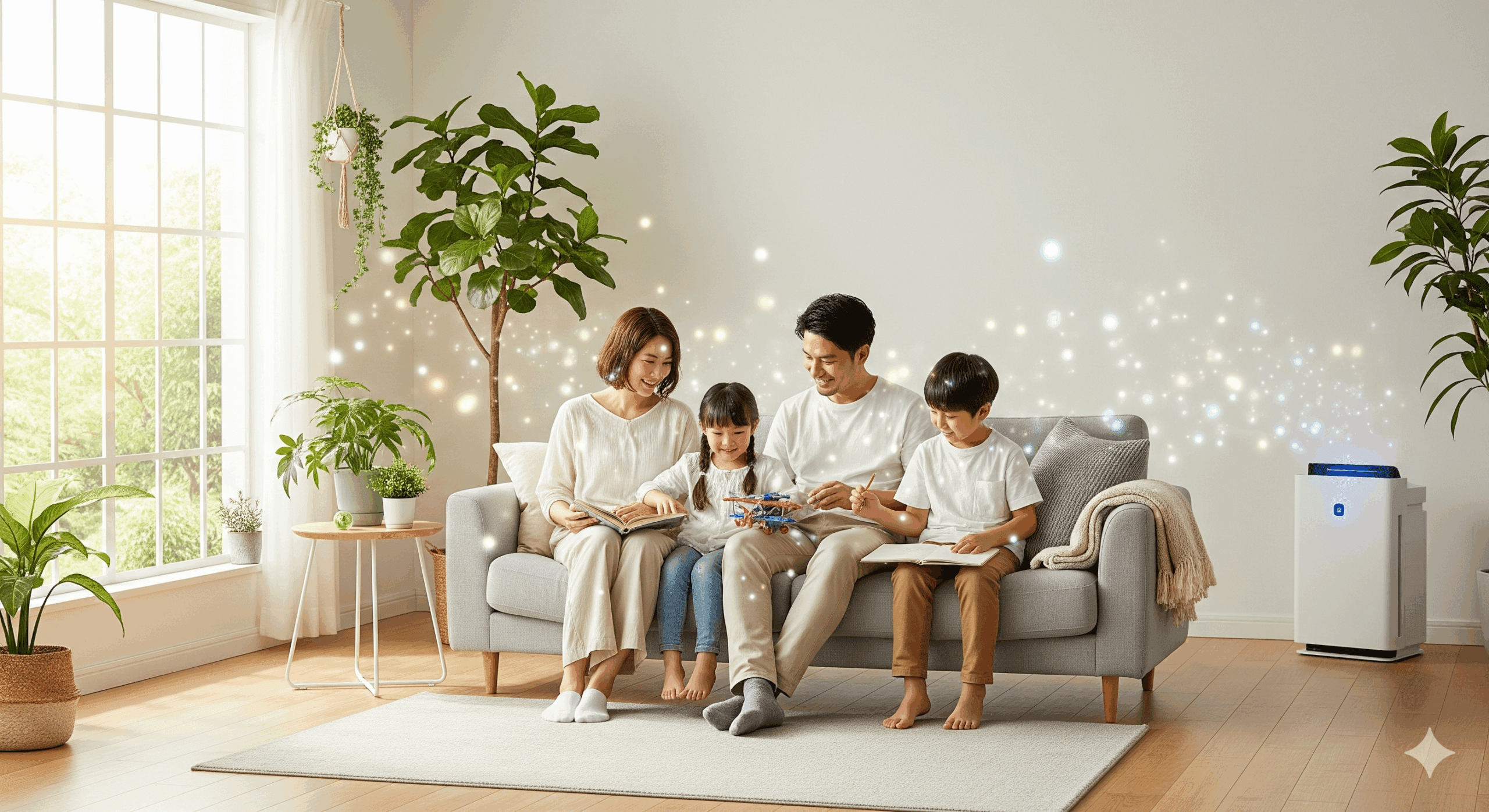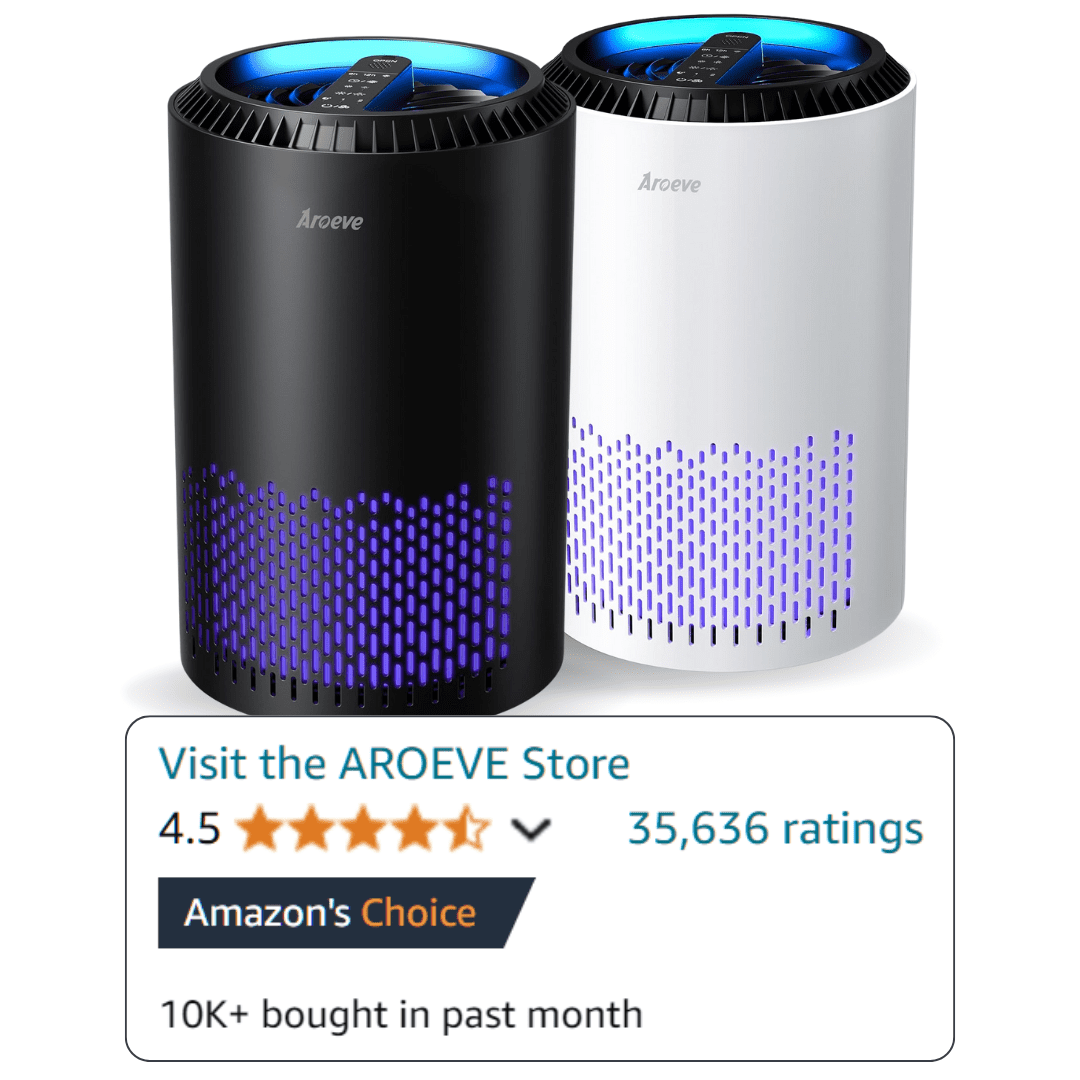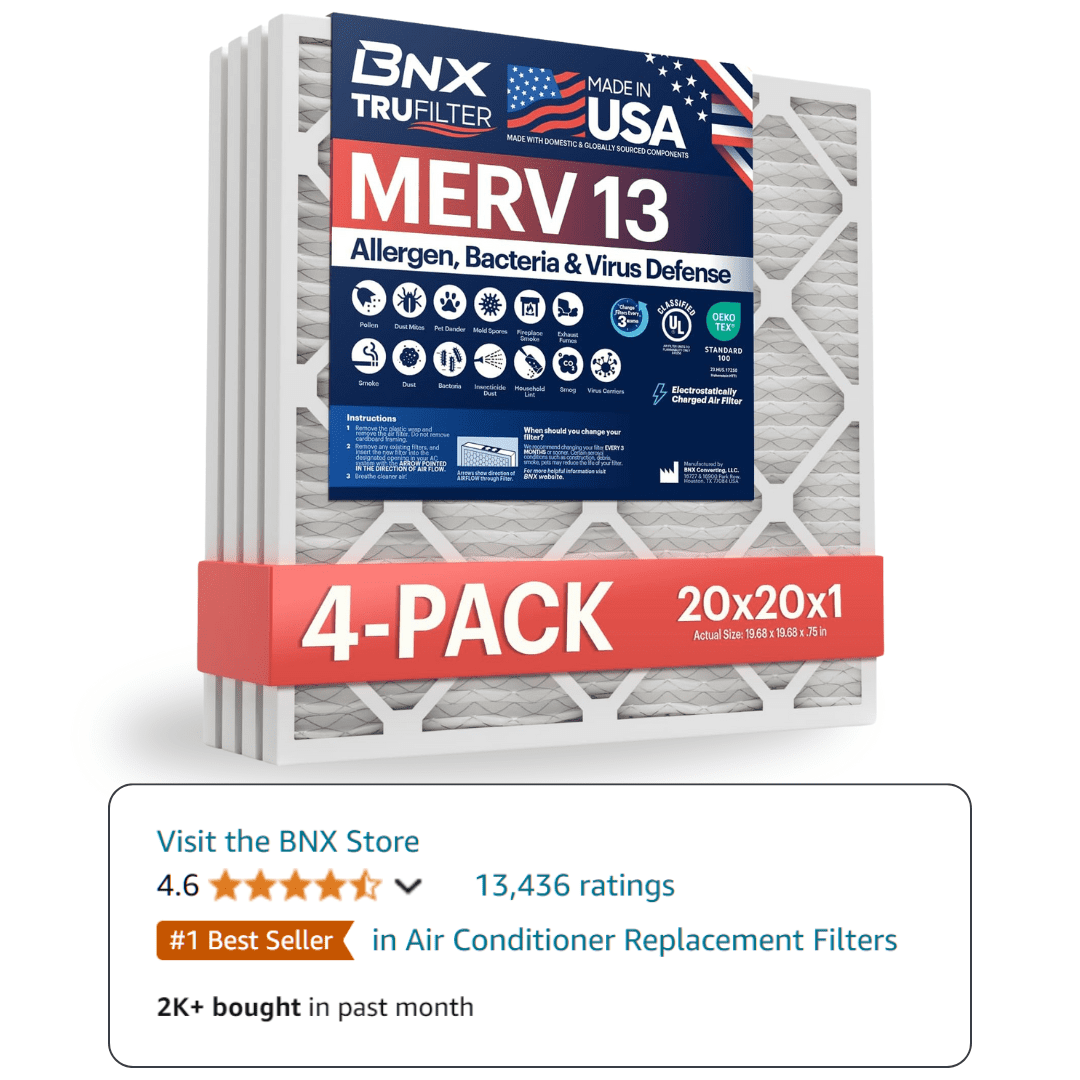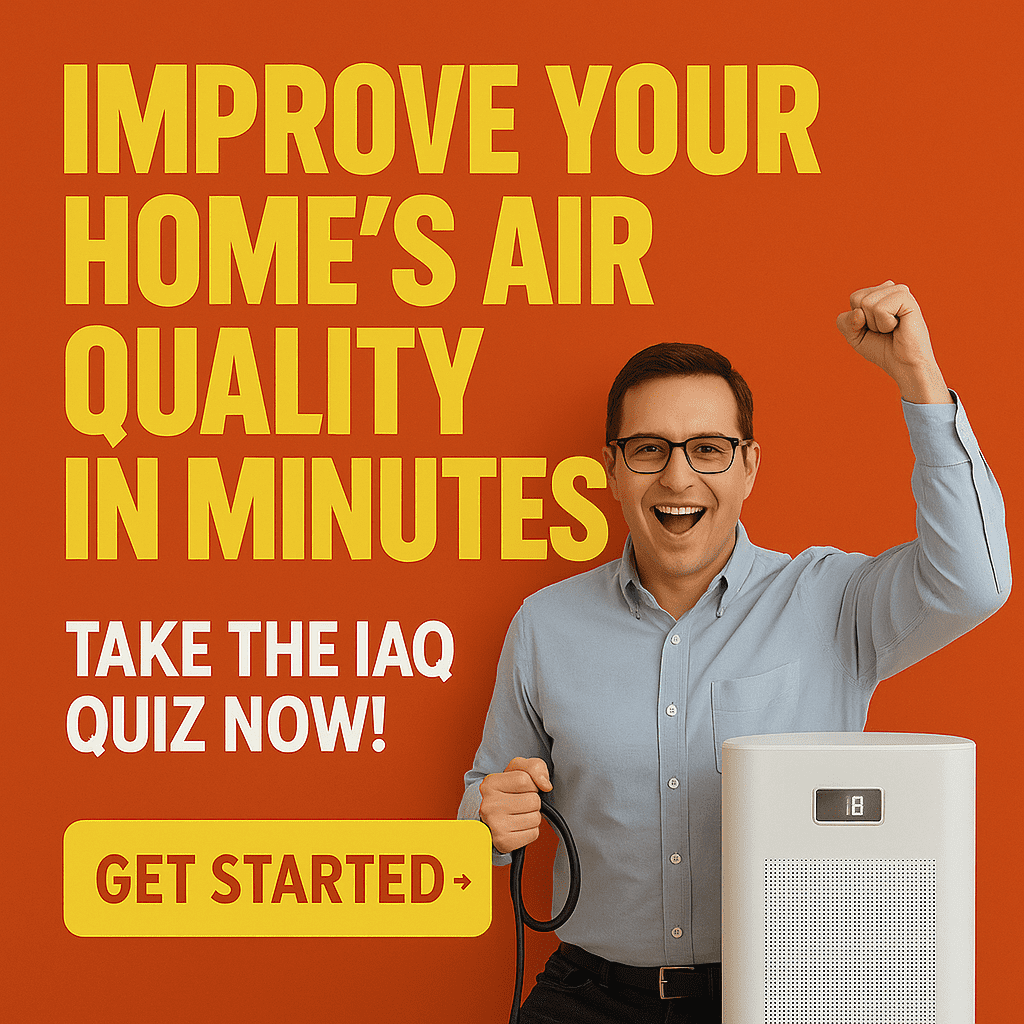What is Indoor Air Quality? (The Simple Definition)
Indoor air quality refers to the condition of the air inside your home, including the presence of pollutants, humidity levels, and ventilation effectiveness. Good IAQ means the air is clean, safe to breathe, and supports your health and comfort.
Why Indoor Air Quality Matters More Than Outdoor Air
Most people spend over 90% of their time indoors. According to the EPA, indoor air can be two to five times more polluted than outdoor air. This is due to limited ventilation, the buildup of contaminants, and the use of products that release chemicals inside the home. Poor IAQ can cause immediate symptoms like headaches and fatigue, and long-term exposure increases the risk of respiratory diseases.
The Hidden Truth About Indoor vs Outdoor Pollution
Outdoor air pollution gets more attention, but indoor sources are often more concentrated. Everyday activities like cooking, cleaning, and even breathing add to indoor pollution. Building materials, furniture, and cleaning products can release volatile organic compounds (VOCs) and other chemicals. Without proper ventilation, these pollutants accumulate, making indoor air quality a bigger concern for most homeowners.
The 5 Major Indoor Air Quality Threats in Your Home
Understanding the main threats to IAQ helps you target the right solutions. The five most significant categories are:
Chemical Contaminants (VOCs, Formaldehyde)
VOCs are gases released from products like paints, cleaning agents, and furniture. Formaldehyde is a common VOC found in pressed wood products and some fabrics. High VOC levels can cause headaches, eye irritation, and long-term health risks. The EPA and ASHRAE recommend minimizing VOC sources and increasing ventilation. Learn more about volatile organic compounds.
Biological Pollutants (Mold, Dust Mites, Pet Dander)
Mold grows in damp areas and releases spores that can trigger allergies and asthma. Dust mites thrive in bedding and carpets. Pet dander is a common allergen. The NIH links these biological pollutants to increased respiratory symptoms, especially in children and people with asthma.
Particulate Matter (PM2.5, PM10, Dust)
Particulate matter includes dust, pollen, and smoke. PM2.5 particles are small enough to enter the lungs and bloodstream, causing cardiovascular and respiratory problems. The EPA sets safe limits for PM2.5 at 12 μg/m³ or lower for healthy indoor air.
Gases (CO2, CO, Radon)
Carbon dioxide (CO2) builds up in poorly ventilated spaces and can cause drowsiness and reduced cognitive function. Carbon monoxide (CO) is a deadly gas from faulty appliances. Radon is a radioactive gas that seeps from the ground and is the second leading cause of lung cancer in the U.S. The EPA and ASHRAE provide guidelines for safe levels and mitigation.
Humidity-Related Issues (Too High, Too Low)
Humidity outside the 40-60% range can cause discomfort and health problems. High humidity encourages mold growth and dust mites. Low humidity dries out skin and respiratory passages, increasing infection risk. Optimal humidity levels are essential for comfort and health.
How to Test Your Home’s Indoor Air Quality
Testing IAQ gives you a clear picture of your home’s air and helps you choose the right improvements.
DIY Testing Methods (Cost: $50-200)
Home test kits are available for mold, radon, and VOCs. Air quality monitors measure PM2.5, CO2, and humidity in real time. These tools are affordable and provide quick feedback, but may not detect all pollutants.
Professional Testing Services (Cost: $300-800)
Certified professionals use advanced equipment to test for a wide range of pollutants, including radon, mold, VOCs, and particulates. They provide detailed reports and recommendations. For complex issues or health concerns, professional testing is the best choice. Learn more about professional testing services.
Continuous Monitoring Solutions (Cost: $100-500)
Smart air quality monitors track IAQ 24/7 and send alerts to your phone. These devices help you spot trends and respond quickly to changes. They are especially useful for homes with children, elderly residents, or anyone with respiratory conditions.
The 5 Proven Strategies to Improve Indoor Air Quality
Improving IAQ requires a combination of methods. The most effective strategies are:
Source Control (Remove/Reduce Pollutants)
Eliminate or reduce sources of pollution. Choose low-VOC products, store chemicals outside living areas, and fix leaks to prevent mold. Regularly clean and maintain appliances to prevent CO buildup.
Ventilation (Fresh Air Exchange)
Bring in fresh outdoor air to dilute indoor pollutants. Use exhaust fans in kitchens and bathrooms. Open windows when outdoor air quality is good. Mechanical ventilation systems, like ERVs and HRVs, provide consistent air exchange and meet ASHRAE Standard 62.2.
Air Filtration (MERV 13+ Filters)
Upgrade HVAC filters to MERV 13 or higher to capture fine particles, pollen, and some bacteria. Change filters every 1-3 months. High-efficiency air filters are recommended by the National Air Filtration Association (NAFA).
Air Purification (HEPA, UV-C, Ionization)
Portable and whole-home air purifiers with HEPA filters remove particulates and allergens. UV-C systems kill bacteria and viruses. Ionization devices can reduce some pollutants but should be used with caution. For comprehensive air cleaning, see whole home air purifiers.
Humidity Control (40-60% Range)
Use dehumidifiers in damp areas and humidifiers in dry seasons. Maintain indoor humidity between 40% and 60% to prevent mold and respiratory issues. Optimal humidity levels support comfort and health.
Room-by-Room Indoor Air Quality Solutions
Each area of your home has unique IAQ challenges. Addressing them room by room ensures comprehensive protection.
Living Room & Bedrooms
Use HEPA air purifiers and high-efficiency filters. Wash bedding weekly in hot water to reduce dust mites. Avoid scented candles and air fresheners that release VOCs.
Kitchen (Cooking Pollutants)
Always use a vented range hood when cooking. Gas stoves release NO2 and CO, so ensure proper ventilation. Store cleaning products in sealed containers.
Bathroom (Moisture Control)
Run exhaust fans during and after showers. Fix leaks promptly. Use mold-resistant paint and clean surfaces regularly to prevent mold growth.
Basement (Radon, Mold Prevention)
Test for radon and install mitigation systems if needed. Use dehumidifiers to keep humidity below 60%. Address water intrusion and insulate pipes to prevent condensation.
Home Office (Electronics, Cleaning Products)
Choose low-emission office furniture and electronics. Use air purifiers to reduce dust and VOCs. Store cleaning supplies away from workspaces.
Indoor Air Quality Health Impacts You Need to Know
Poor IAQ affects everyone, but some groups are more vulnerable. Understanding the risks helps you take action.
Short-term Effects (Headaches, Fatigue, Allergies)
Exposure to indoor pollutants can cause headaches, dizziness, fatigue, and allergy symptoms. These effects often improve when you leave the affected area.
Long-term Health Risks (Asthma, Respiratory Disease)
Chronic exposure increases the risk of asthma, bronchitis, and other respiratory diseases. The NIH and WHO link poor IAQ to heart disease and cancer, especially from radon and particulates.
Vulnerable Populations (Children, Elderly, Pregnant Women)
Children, elderly adults, and pregnant women are more sensitive to indoor pollutants. Children breathe more air per pound of body weight, making them especially vulnerable. The EPA recommends extra precautions for homes with these groups.
Frequently Asked Questions
What is considered good indoor air quality?
Good IAQ means PM2.5 levels below 12 μg/m³, CO2 below 1000 ppm, humidity between 40-60%, and VOCs below EPA limits. No musty or chemical odors should be present.
How do I know if my indoor air quality is bad?
Look for physical symptoms like headaches, fatigue, or allergies. Visible signs include dust buildup, mold, or condensation. Use air quality monitors or professional testing for confirmation.
What causes poor indoor air quality?
Common causes include inadequate ventilation, indoor pollution sources (cleaning products, furniture), outdoor pollution entering the home, and poorly maintained HVAC systems.
How much does it cost to improve indoor air quality?
Basic improvements like better filters or a portable air purifier cost $100-500. Moderate upgrades, such as whole-home air purifiers or dehumidifiers, range from $500-2000. Comprehensive solutions, including ventilation systems, can cost $2000-10000.
Can poor indoor air quality make you sick?
Yes. Poor IAQ can cause “Sick Building Syndrome,” with symptoms like headaches, fatigue, and respiratory issues. Long-term exposure increases the risk of asthma and allergies, especially in children and the elderly.
What are the best filters for home HVAC systems?
MERV 13 or higher filters are recommended for most homes. They capture fine particles and some bacteria. Learn more about high-efficiency air filters.
How often should I test my home’s air quality?
Test at least once a year, or more often if you notice symptoms or make changes to your home. Continuous monitors provide real-time feedback.
Are houseplants effective for improving IAQ?
Houseplants can help reduce some VOCs, but they are not a substitute for ventilation and filtration. Use them as a supplement, not a primary solution.
What is the safest way to control humidity?
Use dehumidifiers in damp areas and humidifiers in dry seasons. Keep humidity between 40-60%. See optimal humidity levels for more.
Where can I find more information on IAQ standards?
Visit ASHRAE, NAFA, and the EPA IAQ section for detailed guidelines and resources.
Sources:
EPA Indoor Air Quality Guidelines
ASHRAE Standard 62.2
National Air Filtration Association
NIH, WHO, and industry case studies




